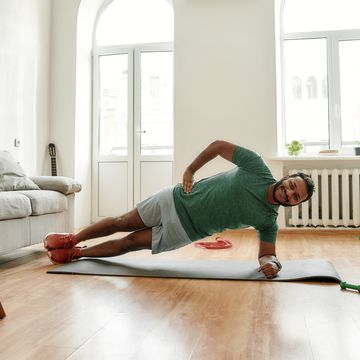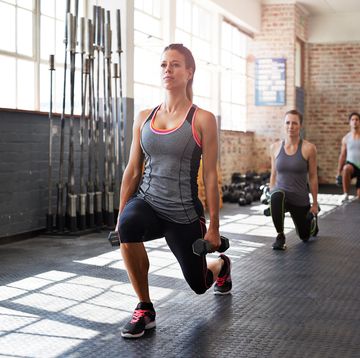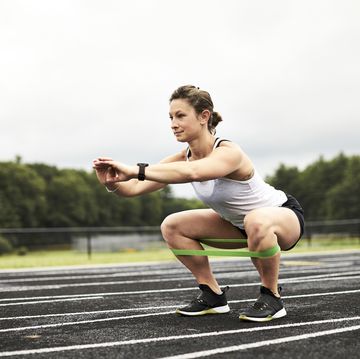The benefits of squatting are well documented. A compound exercise that works the legs and core, it should be a staple in ever runner’s strength training routine.
Runners World, Part of the Hearst UK Wellbeing Network study suggests that you can tailor the benefits by changing the width of your stand. The research team tested two different stance widths: narrow (0.7% of your shoulder width) and wide (1.7% of your shoulder width). The result? ‘The wide stance resulted in statistically smaller vastii forces compared with the narrow stance,’ said the researchers.
Vastii forces refers to the quadriceps muscle group just above the knee. ‘We suggest that recreationally trained men aiming to optimise muscle forces in the vastii muscles during maximum back squat training should consider adopting a narrow stance,’ added the researchers.
‘It makes logical sense that, for untrained individuals, a narrower stance produces greater knee flexion and quadriceps muscle activity,’ says Dr Richard Blagrove, one of the UK’s foremost strength and conditioning (S&C) experts. ‘With a narrower stance, people will tend to push their knees forward further – rather than outward with a wide stance – so this produces greater ankle and knee flexion/bend, which produces the higher muscle forces in the quads and calves.
‘However, the wide stance used in this study seems very wide – almost sumo style – and we don’t tend to use this stance with most runners because they find it uncomfortable and difficult to get good range [flexion at joints],’ continues Blagrove. ‘It is a stance used by competitive powerlifters, so perhaps it has implications for that group of athletes.
‘Finally, in S&C, we also tend to use a high-bar back squat. Here, they used a low-bar position, which many runners would find difficult and uncomfortable. A low-bar position tends to be the style used by competitive powerlifters for squatting.’
Importantly, there are also other ways to get more from your squatting – something that’s best done under the supervision of an expert. ‘In a study like this, there would have been minimal coaching,’ says Blagrove. ‘In an S&C coaching setting, we would tend to coach athletes into deeper and better squat positions using cues and variations of a back squat.’













